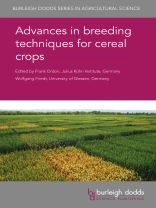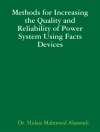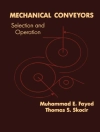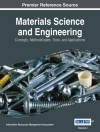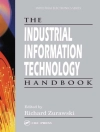- Assesses performance of conventional techniques such as backcross and hybrid breeding in introducing new traits
- Maps current progress in methods to identify quantitative trait loci (QTL) linking phenotypic traits with genetic information for selection
- Shows comparative strengths and weaknesses of marker-assisted selection (MAS) techniques such as genome wide association studies (GWAS) and nested association mapping (NAM)
Содержание
Part 1 Exploiting genetic diversity
1.Alien introgression and breeding of synthetic wheat: Wei Zhang and Xiwen Cai, North Dakota State University, USA;
2.Use of the secondary gene pool of barley in breeding improved varieties: Matthew Haas, Leibniz Institute of Plant Genetics and Crop Plant Research (IPK), Germany; and Martin Mascher, Leibniz Institute of Plant Genetics and Crop Plant Research (IPK) and German Center for Integrative Biodiversity Research, Germany;
3.Marker-assisted trait introgression for wheat breeding & research: Miguel Sanchez-Garcia, International Center for Agricultural Research in the Dry Areas (ICARDA), Morocco; and Alison Bentley, The John Bingham Laboratory, NIAB, UK;
Part 2 Doubled haploids
4.Doubled haploid production in wheat: W. Tadesse, M. Sanchez-Garcia, S. Tawkaz and M. Baum, International Center for Agricultural Research in the Dry Areas (ICARDA), Morocco;
5.Doubled haploid (DH) production for barley: Benjamin Wittkop, Justus Liebig University Giessen, Germany; László Csélènyi, Saatzucht W. von Borries-Eckendorf, Germany;
6.Production of doubled haploid lines for hybrid breeding in maize: Willem S. Molenaar and Albrecht E. Melchinger, University of Hohenheim, Germany;
Part 3 Hybrid breeding
7.Prerequisites, procedures and potential of hybrid breeding in wheat: Philipp H. G. Boeven and C. Friedrich H. Longin, University of Hohenheim, Germany;
8.Challenges and developments in hybrid breeding in barley: Timm Bernhard, Wolfgang Friedt and Benjamin Wittkop, Justus Liebig University Giessen, Germany;
9.Selection strategies in hybrid rye with special consideration of fungal disease resistances: Thomas Miedaner, University of Hohenheim, Germany; and Peer Wilde, KWS Lochow Gmb H, Germany;
Part 4 High throughput phenotyping, genetic markers and QTL mapping
10.Non-invasive field phenotyping of cereal development: Andreas Hund, Lukas Kronenberg and Jonas Anderegg, ETH Zurich, Switzerland; Kang Yu, KU Leuven, Belgium; and Achim Walter, ETH Zurich, Switzerland;
11.Theory and application of phenotyping in wheat for different target environments: Matthew Reynolds and Francisco Pinto, International Maize and Wheat Improvement Centre (CIMMYT), Mexico;
12.Development of single nucleotide polymorphism (SNP) markers for cereal breeding and crop research: current methods and future prospects: Carly Schramm, Yuri Shavrukov and Peter Anderson, Flinders University, Australia; and Akhylbek Kurishbaev and Satyvaldy Jatayev, S. Seifullin Kazakh Agro Technical University, Kazahkstan;
13.Mapping and isolation of major resistance genes in cereals: Jan Bettgenhauser and Simon G. Krattinger, King Abdullah University of Science and Technology, Saudi Arabia;
14.Leveraging the QTLome to enhance climate change resilience in cereals: Roberto Tuberosa, Marco Maccaferri and Silvio Salvi, University of Bologna, Italy;
15.Advances in statistical methods to handle large data sets for genome-wide association mapping in crop breeding: Boby Mathew, University of Bonn, Germany; Mikko J. Sillanpää, University of Oulu, Finland; and Jens Léon, University of Bonn, Germany;
16.Nested association mapping in barley to identify extractable trait genes: Andreas Maurer and Klaus Pillen, Martin-Luther-University Halle Wittenberg, Germany;
Part 5 Genome-wide association studies and genomic selection
17.Genome-wide association studies (GWAS) in wheat: Susanne Dreisigacker, International Maize and Wheat Improvement Center (CIMMYT), Mexico;
18.Genome-wide association studies (GWAS) in barley: Ernesto Igartua, Carlos P. Cantalapiedra and Ana M. Casas, Consejo Superior de Investigaciones Científicas (CSIC), Spain;
19.Genomic prediction in cereals: advantages and drawbacks: Patrick Thorwarth, University of Hohenheim, Germany;
20.Site-directed genome modification in barley and wheat: Jochen Kumlehn, Stefan Hiekel and Nagaveni Budhagatapalli, Leibniz Institute of Plant Genetics and Crop Plant Research (IPK), Germany;
Об авторе
Dr Roberto Tuberosa is Professor of Plant Biotechnology and Breeding in the Department of Agriculture and Food Science at the University of Bologna, Italy. Professor Tuberosa is internationally renowned for his genomic studies to dissect the genetic basis of drought resistance in cereals and how to leverage this knowledge toward the release of climate-resilient cultivars. He is on the editorial board of several leading journals, has been involved in many European and international research projects in cereal breeding, represents Europe in the International Crop Science Society (ICSS) and has published over 170 articles as well as edited a number of books. He has organised international congresses on genomics and breeding of cereals under drought conditions and is a member of the scientific board of the Wheat Initiative and of the Plant Stress advisory board. Amongst other honours, Professor Tuberosa has been elected a Fellow of the Crop Society of America.
